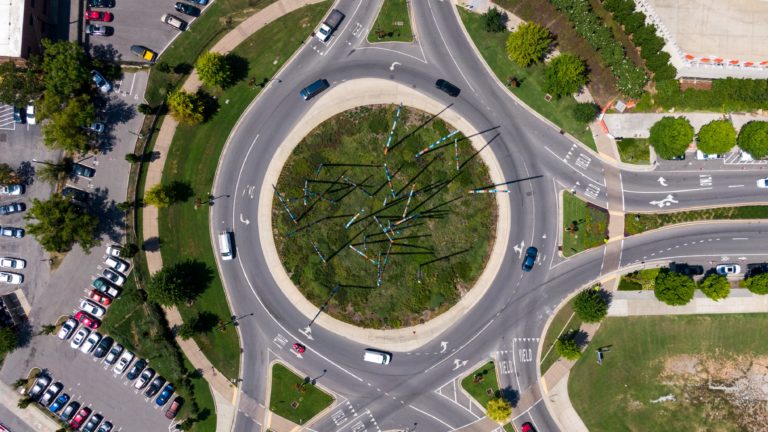A proposed roundabout at US 41 and Fruitville Road is at the center of recent chatter regarding growth and development in Sarasota.
Construction on the two-lane roundabout is scheduled to begin in October 2019, with an estimated completion date of late fall 2020. The City of Sarasota and the Florida Department of Transportation share that the primary goal of the project “is to improve connectivity, access, and safety for pedestrian, bicycle and vehicular traffic flow and operations between downtown Sarasota and the Bayfront area.”
Residents of Sarasota and Manatee counties are no strangers to construction and new traffic patterns. Two years ago, the largely foreign configuration of a diverging diamond opened at the I-75 and University Parkway interchange. Congestion in the Lakewood Ranch area has been alleviated by the unique traffic pattern.
There are also several multi-lane roundabouts near The Mall at University Town Center in Sarasota.
Roundabouts vs. traditional intersections

According to the Insurance Institute for Highway Safety, the first modern roundabouts in the United States were built in Nevada in 1990. They’re a preferred alternative to traditional intersections with stop signs or traffic signals in that severe, high-speed and head-on collisions are typically avoided. These types of crashes are far less likely in a roundabout, where vehicles travel in the same direction and at much lower speeds.
The low speeds also contribute to less frequent and less severe pedestrian injuries. Pedestrians also only need to cross one direction of traffic at a time in a roundabout, and the crossing distance is typically relatively short.
Roundabouts can also ease traffic congestion. According to the Federal Highway Administration, roundabouts typically have lower overall delay than signalized and all-way stop-controlled intersections.
Other benefits of roundabouts
Another potential benefit to roundabouts is the overall investment required. Often, there is little or minimal signal equipment to install, power or maintain. There is also usually less pavement needed because no turn lanes are needed.
A roundabout will continue to function without interruption during a power outage, with no need for law enforcement to direct traffic.
There are environmental advantages to roundabouts, too. Since cars don’t need to wait at traffic signals, there can be reductions in pollution, noise and fuel consumption. Roundabout islands can be landscaped with native plants and trees. They generally require less land than traditional intersections as they don’t require turning lanes.
Hesitation and education regarding roundabouts
While economics and safety seem to point at roundabouts as a great option, public opinion is not always as favorable. Much of this has been attributed to confusion over how they operate.
If you’re approaching a single-lane roundabout, FDOT has some tips on how to navigate:
- Reduce your speed to 10-15 mph as you approach the roundabout
- Be aware of bicyclists and pedestrians
- Look left for oncoming traffic (traffic moves counter-clockwise)
- Yield to vehicles already in the roundabout — wait for a gap and enter
- Do not stop in the roundabout; do not pass other vehicles
- Use turn signal to exit the roundabout to the right
- Yield to pedestrians crossing the exit lane; allow emergency vehicles to pass.
The same rules apply to a multi-lane roundabout. Additionally, follow signs and pavement markings to determine what lane(s) you need to be in to reach your desired destination.
FDOT also provides some helpful videos.